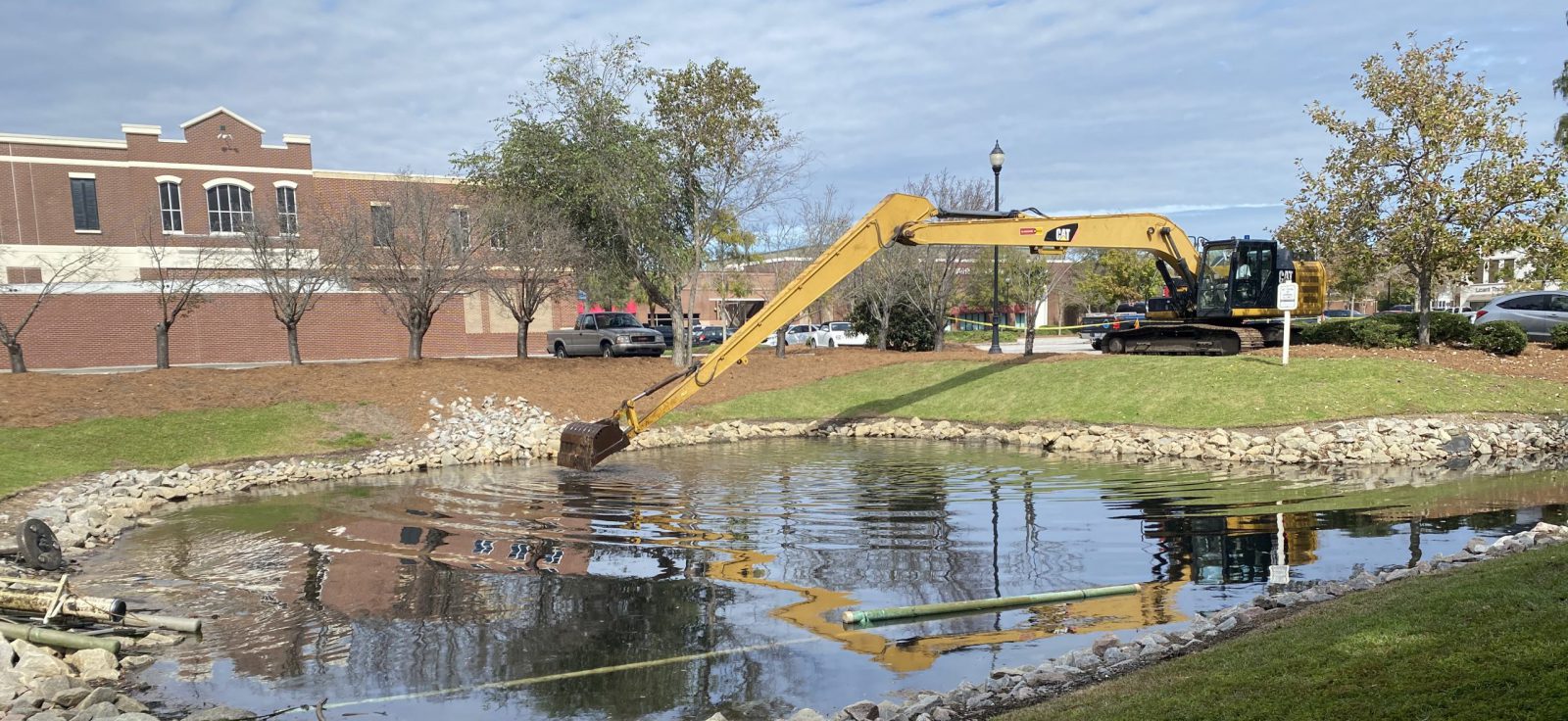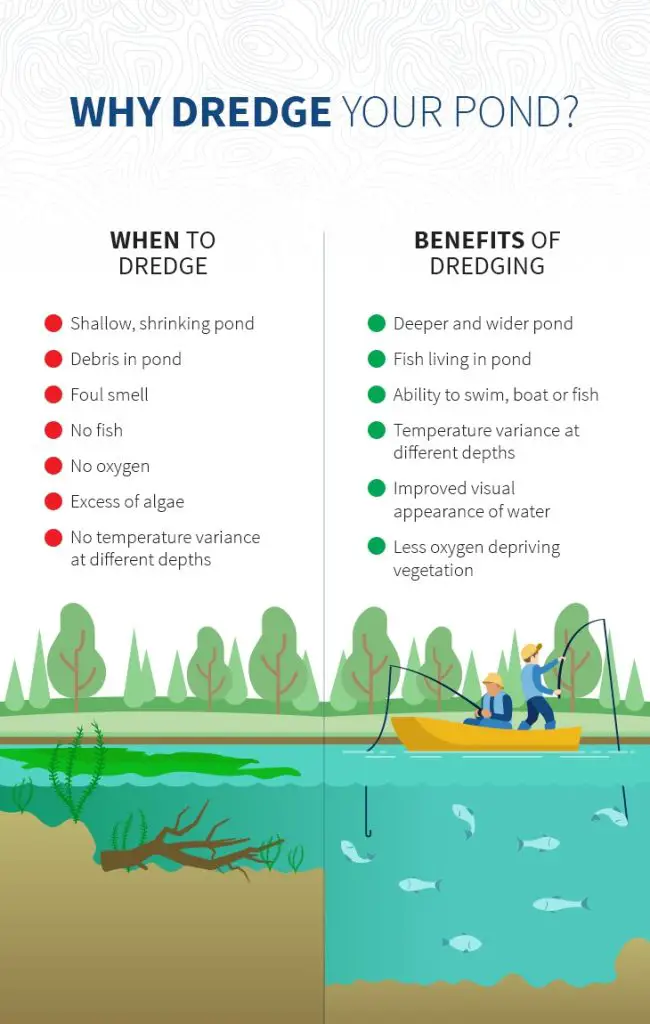Dredging a pond is a crucial process to maintain its health and functionality. Over time, ponds can accumulate sediment, debris, and organic matter, which can lead to reduced water quality, habitat degradation, and potential flooding. Dredging helps to remove these unwanted materials and restore the pond to its optimal condition. In this guide, we will explore the steps involved in dredging a pond and the equipment needed for the job.

Credit: geoforminternational.com
Why Dredging is Important
Before we delve into the dredging process, it’s essential to understand why dredging is important for ponds. Over time, sediment, silt, and debris can build up in a pond, causing it to become shallower and reducing its water storage capacity. This accumulation can also impact aquatic life, water quality, and the overall ecosystem of the pond. By dredging the pond, you can restore its depth, improve water quality, and create a healthier habitat for plants and animals.
The Dredging Process
The dredging process involves the removal of sediment, silt, and debris from the bottom of the pond. Here are the steps involved in dredging a pond:
1. Survey The Pond
Before starting the dredging process, it’s essential to survey the pond to determine the extent of sediment accumulation and the depth of the pond. This information will help you plan the dredging process effectively.
2. Obtain Permits
Depending on the size of the pond and local regulations, you may need to obtain permits before dredging. Check with your local authorities to ensure you comply with all necessary regulations.
3. Drain The Pond
Before dredging can begin, the pond needs to be drained to expose the sediment at the bottom. Make sure to relocate any aquatic life to a temporary habitat during this process.
4. Use Dredging Equipment
There are various types of dredging equipment available, including dredgers, excavators, and pumps. Choose the appropriate equipment based on the size of your pond and the amount of sediment to be removed.
5. Remove Sediment
Once the equipment is in place, begin removing the sediment from the bottom of the pond. Make sure to dispose of the sediment properly to prevent it from contaminating other water bodies.
6. Refill The Pond
After the sediment has been removed, refill the pond with clean water. This will help restore the pond to its original depth and create a healthy environment for aquatic life.
Equipment Needed for Dredging
When dredging a pond, you will need various pieces of equipment to ensure the process is carried out effectively. Here are some essential tools and machinery for pond dredging:
| Equipment | Function |
|---|---|
| Dredger | Used to remove sediment from the bottom of the pond. |
| Excavator | Helps to scoop and lift sediment from the pond. |
| Pump | Transfers the sediment and water mixture to a disposal site. |
| Safety Gear | Includes gloves, boots, and helmets to protect workers. |

Credit: www.solitudelakemanagement.com
Benefits of Pond Dredging
There are several benefits to dredging a pond, including:
- Improving water quality
- Restoring aquatic habitats
- Preventing flooding
- Enhancing the overall aesthetic of the pond
Conclusion
Dredging a pond is a necessary process to maintain its health and functionality. By following the steps outlined in this guide and using the appropriate equipment, you can effectively remove sediment and debris from the pond, restore its depth, and create a healthier habitat for plants and animals. Remember to comply with local regulations and obtain any necessary permits before starting the dredging process. With proper planning and execution, your pond will thrive for years to come.


